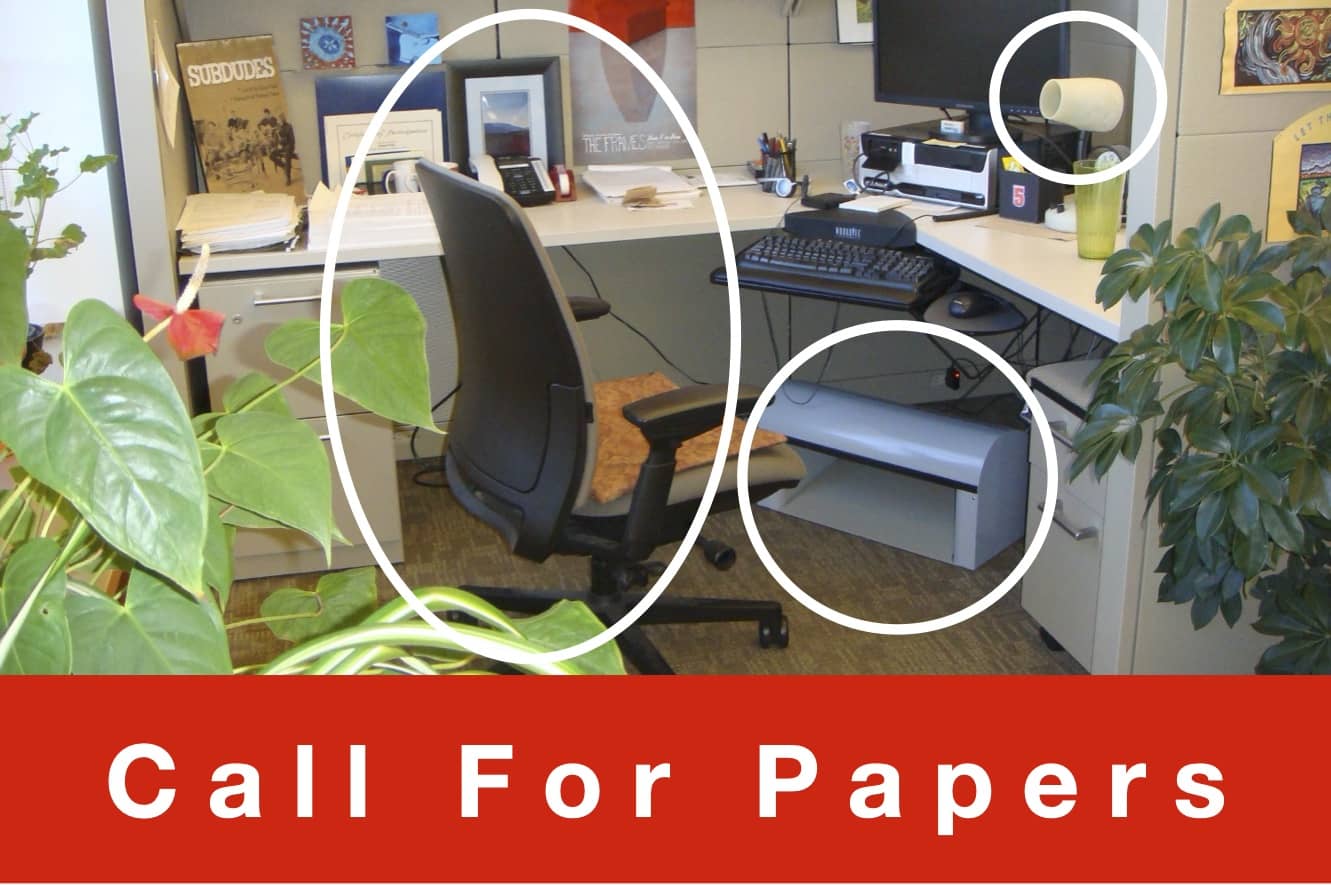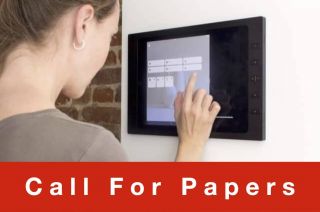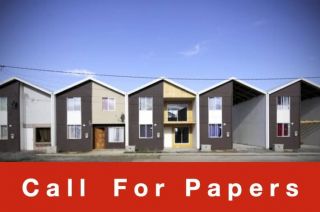
www.buildingsandcities.org/calls-for-papers/mainstreaming-pcs.html
Mainstreaming Personal Comfort Systems

Guest Editors: Ed Arens, Hui Zhang, Rajan Rawal and Yongchao Zhai
Abstract submissions closed on: 06 SEPTEMBER 2021
How can the innovation process be assisted and accelerated for implementing this technology? What leadership can these different actors provide for promoting this transition?
This special issue explores the further development and adoption of decentralized building thermal environmental control, in which occupants can create and control their local thermal environments with personal devices while the central space conditioning (HVAC) is scaled back. This approach to personal control promises to make a greater proportion of a building's occupants comfortable, while at the same time reducing the energy- and system costs of a central HVAC system.
The adoption of this technology involves a diverse array of actors (manufacturers, standards organisations, design professionals, client groups, real estate and facilities operators) and its adoption challenges their existing practices. Key questions addressed in this special issue are:
- What are the barriers and drivers to widely implementing this technology?
- How can the innovation process be assisted and accelerated?
- What leadership can these different actors provide for promoting this transition?
- What arguments will be a compelling to clients and the real estate market?
Personal comfort systems (PCS) are defined here as thermal systems that heat and cool individuals without affecting the environments of surrounding occupants, and that are under the individual's control. They tend to be devices locally positioned on, or incorporated in, workstation furniture such as chairs, desktops, and near the feet and legs. Some are readily available (such as small DC-powered desk fans), while some are mostly still prototypes (heated and cooled chairs; efficient footwarmers). PCS might also include personal ventilation, but air quality is not the topic here. It is also possible to stretch the PCS definition to include wearables (e.g. thermally active clothing and jewellery-like carried devices), although it becomes harder to characterize such things as being part of a building system. Passive adaptive opportunities also border somewhat on PCS, such as relaxing office dress codes and providing access to operable windows.
Although a variety of decentralized control methods were common in the pre-air-conditioned era, they virtually disappeared from practice as designers came to regard space conditioning as a task for automated and centralized machines.The capabilities of HVAC machinery greatly influenced building design and created the expectation that comfort requires uniform levels of space temperature and humidity.This notion proved to have two important faults. First, individuals vary in their thermal needs and substantial proportions of building occupants remain uncomfortable at any central thermostat setting. Second, maintaining narrow temperature conditions in pursuit of an optimal comfort condition is energy-intensive.
PCS devices provide occupants wider ranges of comfortable temperatures. They accommodate the individual variation in thermal requirements that occur between individuals and even within individuals over the course of a day, week, or month. The heating and cooling effectiveness of different devices has been quantified in terms of 'corrective power' and are now classified in ASHRAE Std55-2020 ["Thermal Environmental Conditions for Human Occupancy"] for use in environmental quality rating schemes. Making such devices available to occupants provides the building a higher environmental quality rating in green- and wellness standards.
Personal comfort systems can save HVAC energy by extending the thermal comfort zone boundaries, and allowing the building central system to work less hours and at lower energy intensity while the PCS devices provide the occupants with comfort (Hoyt 2014, Zhang et al. 2015a, Zhang et al. 2018). Heating and cooling occupants directly is inherently much more efficient than cooling the surrounding room air or surfaces. PCS also reduce the peak energy demand and increase resilience because they are driven by batteries.
A variety of barriers need to be addressed before PCS are incorporated into building design, or even used in retrofitting existing buildings. How well do they work in practice? Who accepts responsibility for a design that relies on them? Who maintains them? From whose budget would they come, and who benefits from the energy and comfort improvements? On the other hand, because PCS devices will be consumer products, they can be fitted with IOT technology making them candidates to act as sensors and possibly actuators for the central HVAC system, expanding its capabilities and reliability. How might such additional capability help PCS become integrated into buildings at scale?
Extensive resources already exist to support PCS technology: ideas, designs, understanding of physiological bases of PCS comfort, laboratory- and field testing of prototypes, newly supportive environmental standards; all of these different perspectives point to the feasibility of PCS technology at improving comfort and increasing energy efficiency in buildings.There are at least three major PCS review papers making the case that PCS is effective at providing comfort within a range of ambient conditions (Vesely and Zeiler 2014; Zhang et al. 2015b; Rawal 2020).
It remains challenging to transform the environmental control systems now used in the building industry. Although PCS devices may begin to appear in the furniture- and appliances markets to cater to occupants' comfort needs, further R&D is needed to assure that the devices operate in conjunction with their surrounding buildings' environmental control systems, so that they also increase the building's energy efficiency. Considerable new information will be needed to inform and assist both designers and building operators. This special issue solicits information that will: document the benefits of PCS to manufacturers and users, analyse the impediments to mainstreaming PCS and help to guide HVAC practice toward more decentralized, occupant-centric systems.
Suggested Topics
PCS field studies. Only a few field studies exist in which PCS has been integrated into a central building HVAC system. Studies of comfort and energy are very rare, because most of the energy savings from decentralized control come from relaxing the temperature range between heating and cooling setpoints, and building management is generally afraid to experiment with this. Reports of such tests with energy savings evidence would be very welcome.
Evidence of PCS capabilities for serving metabolically transient and diverse occupancies. There is an inherent comfort advantage from fast-acting and decentralized environmental control that cannot be matched by any form of uniform control. Metabolic rate transients happen in retail stores, lobbies, commuter arrivals at the office; spatial heterogeneity in metabolic rates are exemplified in fitness centres with their exercisers and staff, restaurants with waiters and customers, and again retail stores with clerks and shoppers. A building exhibiting such enhanced comfort capability should be considered better than existing buildings, and be the gold standard. It could be not only more efficient than current practice, but commanding a higher price.
Crediting passive measures, or personally owned wearables, as components of a building's control system. There may be creative ideas about how to credit adaptive opportunities provided in a building, or by its tenants' dress policies, that would have the effect of improving comfort and building energy. Even if they may not ultimately fit within the concept of 'PCS' or 'decentralized control', it would be good to learn if and where there are useful overlaps .
Methods of testing. Determining PCS effectiveness/viability (determining the corrective power of particular products or types of PCS products).
Standards implementation. In order to systematize credit for PCS and fans, ASHRAE Standard 55 has instituted a new thermal-environment-control classification, intended for adoption into green building standards. Questions remain, for example: what would be a reasonable range for the PMV comfort zone when occupants have PCS available-- +/-0.5, +/-0.7, or +/-1.0?
Commercialization. Analyses of market abandonment of previous PCS products would be valuable. Examples of current products, either on the market or potentially there, could be usefully reviewed. What became of early PCS implementations that appeared in Japan and elsewhere in the 1990's? What has changed since then that might make commercialization more promising now?
Benefits. Evidence of productivity gains under PCS, and analyses of first-cost reductions in HVAC under PCS-enabled modes of operation, reduced retrofit costs of decentralized PCS control versus other retrofit options, analyses of operational (energy) cost reductions under PCS operation, quantification of resilience and demand-response benefits, IOT data and communications benefits from having sensors/actuators/wireless features included in PCS.
Real-estate/facility-management economics. Who pays for the PCS in a decentralized building HVAC system, and who reaps the operational benefits? PCS and fans increase the resilience and survivability of buildings especially under warm conditions; how might those be quantified? How might PCS-enabled design accelerate building retrofits, since it can be carried out in parallel or independently from upgrades to building and system.
Transforming professional A/E practice. Aside from standards provisions that enable designing with PCS, what other measures would be needed to encourage designers to use PCS in a decentralized building system, and to reduce their professional liability for having downsized mechanical HVAC equipment and ductwork at the design stage?
Design tools. New tools might be capable of modelling transient thermophysiology and comfort at the local body segment level, calculating local occupant-centred MRT, modelling within-room airflow patterns for fan layouts, and ceiling-fan-integrated air conditioning (CFIAC) design. Modelling of, and control sequences for, decentralized HVAC operation enhanced by sensory feedback from IOT-enabled PCS and other devices.
Briefing Note for Contributors
You are invited to submit an abstract for a journal paper in this special issue of Buildings & Cities. In the first instance, please send a 500 word (maximum) abstract defining the scope, methods and results to Richard Lorch richard@rlorch.net by 6 SEPTEMBER 2021. The initial abstract submission must include:
- the author's and all co-author's names, affiliations and contact details
- the question(s) and topics in this Call for Papers that the abstract and intended paper addresses
- the abstract (300 - 500 words maximum) which should include a description of methods and key findings
Abstracts will be reviewed by the editors to ensure a varied, yet integrated selection of papers around the topic of the special issue. Authors of accepted abstracts will be invited to submit a full paper which then undergoes a double-blind peer review process.
The journal publishes the several different types of papers: research, synthesis, policy analysis, methods, & replication. Details on their length and scope: https://bit.ly/3n0mIIz. In addition, the journal also publishes short commentaries (<1500 words) and welcomes contributions from practitioner / industry perspectives. Potential authors can propose a commentary by contacting the editors with an abstract.
Timeline
Deadline for abstract submission: 6 September 2021
Full papers due 01 February 2022 (NB: authors can submit sooner if they wish)
Referees' comments May 2022
Final version due July 2022
Publication of special issue August 2022 (NB: individual papers are published as soon as they are accepted)
Buildings & Cities journal
Buildings & Cities is an international, open access, not-for-profit, double-blind peer-reviewed research journal. Its focus is the interactions between buildings, neighbourhoods and cities by understanding their supporting social, economic and environmental systems. More information including its Aims & Scope, Key Principles and Editorial Board can be found online: www.buildingsandcities.org.
Buildings & Cities is an open access journal and has an article processing charge of £1200 (plus VAT if applicable). If you do not have institutional support, please contact the editor to discuss. We endeavour to assist those without funding to publish in our journal.
Questions?
If you have a question, please contact:
Richard Lorch richard@rlorch.net
or Ed Arens earens@berkeley.edu
References
Hoyt, T., E. Arens, and H. Zhang. 2014. Extending air temperature setpoints: Simulated energy savings and design considerations for new and retrofit buildings. Building and Environment. DOI: https://doi.org/10.1016/j.buildenv.2014.09.010
Rawal,R., Schweiker, M., Berk Kazanci, O., Vardhan, V., Jin, Q., Duanmu, L. (2020). Personal comfort systems: A review on comfort, energy, and economics. Energy and Buildings, 214. DOI: https://doi.org/10.1016/j.enbuild.2020.109858
Vesely, M. and Zeiler, W. (2014). Personalized conditioning and its impact on thermal comfort and energy performance - A review. Renewable and Sustainable Energy Reviews, 34, 401-408. DOI: https://doi.org/10.1016/j.rser.2014.03.024
Zhang, H., E. Arens, M. Taub, D. Dickerhoff, F. Bauman, M. Fountain, W. Pasut, D. Fannon, Y.C. Zhai, and M. Pigman. (2015a). Using footwarmers in offices for thermal comfort and energy savings. Energy and Buildings, 104 (3), 233 - 243. https://escholarship.org/uc/item/3cf6268m
Zhang, H., Arens, E. and Zhai, Y. (2015b). A review of the corrective power of personal comfort systems in non-neutral ambient environments. Building and Environment, 91, 15-41. DOI: https://doi.org/10.1016/j.buildenv.2015.03.013
Zhang, H., Bauman, F., Arens, E., Zhai, Y., Dickerhoff, D., Zhou, X., Luo, M., (2018). Reducing building over-cooling by adjusting HVAC supply airflow setpoints and providing personal comfort systems. Proceedings of Indoor Air.https://escholarship.org/uc/item/3164g329
Latest Peer-Reviewed Journal Content
A living lab approach to co-designing climate adaptation strategies
M K Barati & S Bankaru-Swamy
Mediation roles and ecologies within resilience-focused urban living labs
N Antaki, D Petrescu, M Schalk, E Brandao, D Calciu & V Marin
Negotiating expertise in Nepal’s post-earthquake disaster reconstruction
K Rankin, M Suji, B Pandey, J Baniya, D V Hirslund, B Limbu, N Rawal & S Shneiderman
Designing for pro-environmental behaviour change: the aspiration–reality gap
J Simpson & J Uttley
Lifetimes of demolished buildings in US and European cities
J Berglund-Brown, I Dobie, J Hewitt, C De Wolf & J Ochsendorf
Expanding the framework of urban living labs using grassroots methods
T Ahmed, I Delsante & L Migliavacca
Youth engagement in urban living labs: tools, methods and pedagogies
N Charalambous, C Panayi, C Mady, T Augustinčić & D Berc
Co-creating urban transformation: a stakeholder analysis for Germany’s heat transition
P Heger, C Bieber, M Hendawy & A Shooshtari
Placemaking living lab: creating resilient social and spatial infrastructures
M Dodd, N Madabhushi & R Lees
Church pipe organs: historical tuning records as indoor environmental evidence
B Bingley, A Knight & Y Xing
A framework for 1.5°C-aligned GHG budgets in architecture
G Betti, I Spaar, D Bachmann, A Jerosch-Herold, E Kühner, R Yang, K Avhad & S Sinning
Net zero retrofit of the building stock [editorial]
D Godoy-Shimizu & P Steadman
Co-learning in living labs: nurturing civic agency and resilience
A Belfield
The importance of multi-roles and code-switching in living labs
H Noller & A Tarik
Researchers’ shifting roles in living labs for knowledge co-production
C-C Dobre & G Faldi
Increasing civic resilience in urban living labs: city authorities’ roles
E Alatalo, M Laine & M Kyrönviita
Co-curation as civic practice in community engagement
Z Li, M Sunikka-Blank, R Purohit & F Samuel
Preserving buildings: emission reductions from circular economy strategies in Austria
N Alaux, V Kulmer, J Vogel & A Passer
Urban living labs: relationality between institutions and local circularity
P Palo, M Adelfio, J Lundin & E Brandão
Living labs: epistemic modelling, temporariness and land value
J Clossick, T Khonsari & U Steven
Co-creating interventions to prevent mosquito-borne disease transmission in hospitals
O Sloan Wood, E Lupenza, D M Agnello, J B Knudsen, M Msellem, K L Schiøler & F Saleh
Circularity at the neighbourhood scale: co-creative living lab lessons
J Honsa, A Versele, T Van de Kerckhove & C Piccardo
Positive energy districts and energy communities: how living labs create value
E Malakhatka, O Shafqat, A Sandoff & L Thuvander
Built environment governance and professionalism: the end of laissez-faire (again)
S Foxell
Co-creating justice in housing energy transitions through energy living labs
D Ricci, C Leiwakabessy, S van Wieringen, P de Koning & T Konstantinou
HVAC characterisation of existing Canadian buildings for decarbonisation retrofit identification
J Adebisi & J J McArthur
Simulation and the building performance gap [editorial]
M Donn
Developing criteria for effective building-sector commitments in nationally determined contributions
P Graham, K McFarlane & M Taheri
Join Our Community

The most important part of any journal is our people – readers, authors, reviewers, editorial board members and editors. You are cordially invited to join our community by joining our mailing list. We send out occasional emails about the journal – calls for papers, special issues, events and more.
We will not share your email with third parties. Read more



Latest Commentaries
COP30 Report
Matti Kuittinen (Aalto University) reflects on his experience of attending the 2025 UN Conference of the Parties in Belém, Brazil. The roadmaps and commitments failed to deliver the objectives of the 2025 Paris Agreement. However, 2 countries - Japan and Senegal - announced they are creating roadmaps to decarbonise their buildings. An international group of government ministers put housing on the agenda - specifying the need for reduced carbon and energy use along with affordability, quality and climate resilience.
Building-Related Research: New Context, New Challenges
Raymond J. Cole (University of British Columbia) reflects on the key challenges raised in the 34 commissioned essays for Buildings & Cities 5th anniversary. Not only are key research issues identified, but the consequences of changing contexts for conducting research and tailoring its influence on society are highlighted as key areas of action.